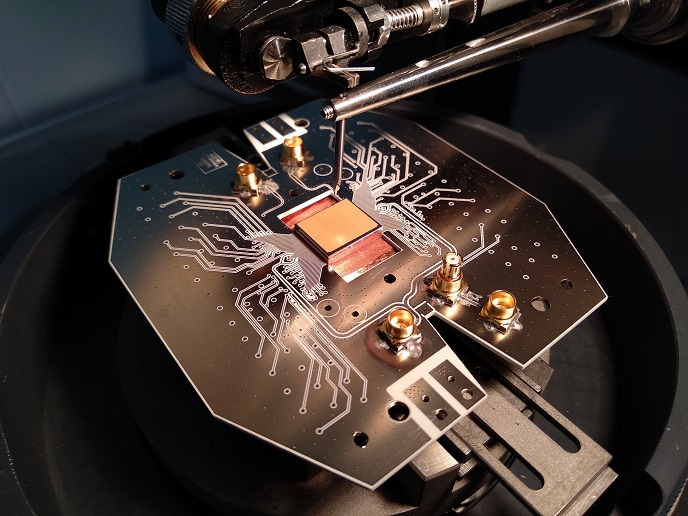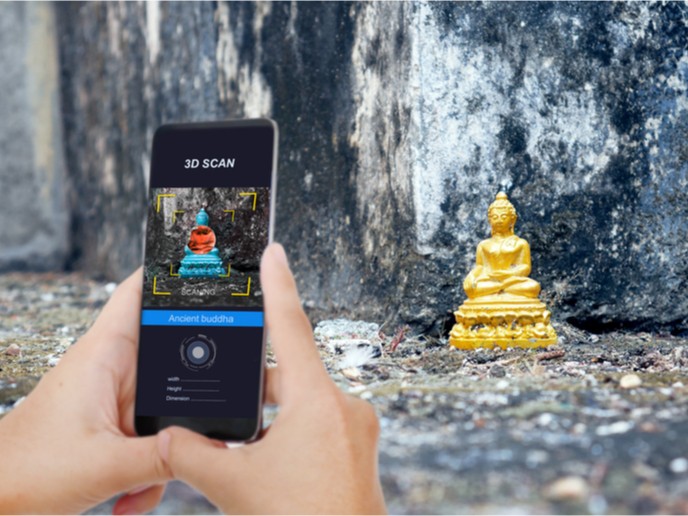Microwave-driven trapped ion quantum computing sets new records
Trapped atomic ions are one of the most promising platforms for implementing large-scale quantum computers. The qubits are based on the stable electronic states of ions confined and trapped using electromagnetic fields. Scalability is in sight, given that millions of identical trapped ion qubits – atomic clock standards – can be created. Conventionally, each qubit is manipulated using two laser beams. This works in the laboratory for one or a few qubits, but large-scale quantum computers would require millions of laser beams. Well established and compact microwave technology could enable replacement of laser beam pairs with applied voltage to a microchip at mild temperatures. The EU-funded MicroQC(opens in new window) project advanced this approach, paving the way to large-scale quantum computing harnessing scalable microwave-driven quantum logic on a chip.
Microwave-driven trapped ion quantum computers: key challenges
Using microwave radiation instead of precisely controlled laser beams allows scientists to radiate many ions with a single source, and off the-shelf microwave components can do the trick. However, global long wavelength radiation alone only weakly affects the ions’ motion. Combining it with strong local magnetic fields enables precise and efficient control of the qubits of interest. A key challenge arises in the effects of large magnetic field gradients on microfabricated ion trap chips. In addition, the current concept of a large-scale trapped ion quantum computer architecture consists of different modules (like tiny tiles) connected via ‘X-junctions’ that allow an individual ion qubit to interact with its neighbours. The modularity imparts scalability; however, each module has different zones within it for loading and trapping, manipulation, storage and readout, meaning high-fidelity ion transport protocols are mandatory. For example, 99 % fidelity means less than 1 error for every 100 operations.
Record-breaking lows: crosstalk and ion transport errors
MicroQC successfully addressed both these challenges. Project coordinator Nikolay V. Vitanov of Sofia University(opens in new window) explains: “Within MicroQC, major efforts were devoted to improving the microfabricated ion trap chips, which made it possible to increase the magnetic field gradient by an order of magnitude – from about 20 to nearly 200 Tesla/metre. The larger gradient allows for the construction of much faster and more precise quantum gates.” Perhaps the most notable achievements of the consortium relate to enhancing two-qubit gate fidelity and minimising crosstalk and ion transport errors. Scaling up the qubit number of a quantum computer from the current best of 127 to millions will require that each qubit or qubit pair be controlled individually and with high accuracy. Crosstalk – when the manipulation of one qubit affects others – significantly complicates quantum error correction since errors are then neither local nor predictable. “MicroQC achieved two-qubit gate fidelity of 99.7 %, unwanted crosstalk to neighbouring qubits less than 10-7 and a roadmap towards utility scale quantum computing with millions of qubits. These and other world records in trapped ion quantum computing were attained with the project’s work,” adds Vitanov.
The future of microwave-based quantum information processing
The knowledge, insight and experience gained within the project were summarised in a roadmap to high technology-readiness levels for microwave-based quantum information processing with trapped ions. The project may have ended, but its successful establishment of the start-ups Universal Quantum(opens in new window), Qudora Technologies(opens in new window) and EleQtron(opens in new window) ensures its ground-breaking successes will find practical application in tomorrow’s quantum computers to tackle real-world problems.







